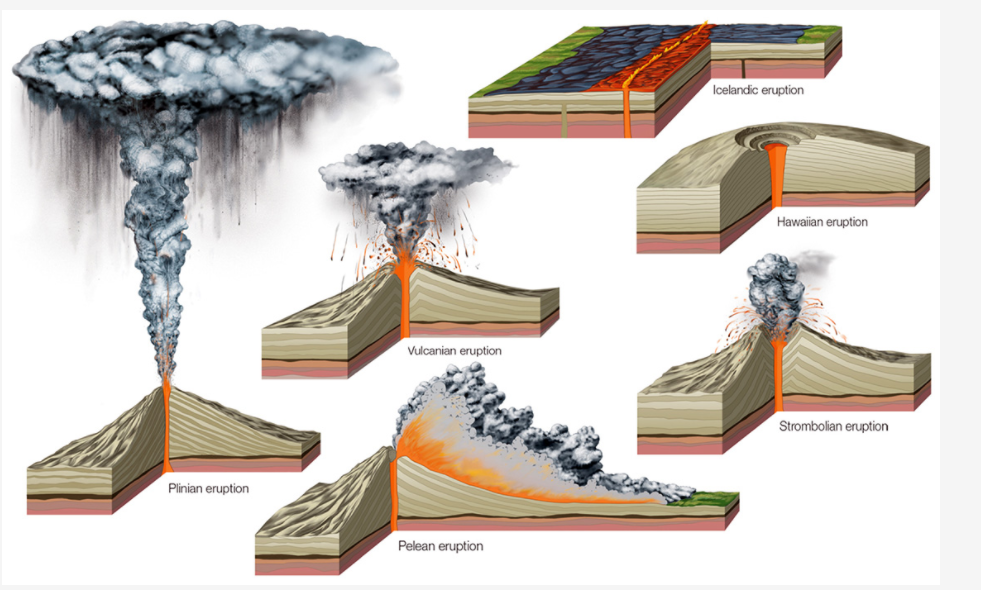Volcanic Eruptions
-
Volcanic eruptions happen when lava and gas are discharged from a volcanic vent.
-
The most common consequences of this are population movements as large numbers of people are often forced to flee the moving lava flow.
Types:
Volcanic activity and volcanic areas are commonly divided into six major types:
-
Icelandic:
-
It is characterized by effusions of molten basaltic lava that flow from long, parallel fissures. Such outpourings often build lava plateaus.
-
-
Hawaiian:
-
It is similar to the Icelandic variety. In this case, however, fluid lava flows from a volcano’s summit and radial fissures to form shield volcanoes, which are quite large and have gentle slopes.
-
-
Strombolian:
-
These involve moderate bursts of expanding gases that eject clots of incandescent lava in cyclical or nearly continuous small eruptions.
-
Because of such small frequent outbursts, Stromboli volcano, located on Stromboli Island off the northeast coast of Italy, has been called the “lighthouse of the Mediterranean.”
-
-
Vulcanian:
-
It is named for Vulcano Island near Stromboli, generally involving moderate explosions of gas laden with volcanic ash. This mixture forms dark, turbulent eruption clouds that rapidly ascend and expand in convoluted shapes.
-
-
Pelean:
-
It is associated with explosive outbursts that generate pyroclastic flows, dense mixtures of hot volcanic fragments and gas.
-
The fluidized slurries produced by these eruptions are heavier than air but are of low viscosity and pour down valleys and slopes at great velocities. As a result, they are extremely destructive.
-
-
Plinian:
-
This type is an intensely violent kind of volcanic eruption. In this type of eruption, gases boiling out of gas-rich magma generate enormous and nearly continuous jetting blasts that core out the magma conduit and rip it apart.
-
The up rushing gases and volcanic fragments resemble a gigantic rocket blast directed vertically upward. Plinian eruption clouds can rise into the stratosphere and are sometimes continuously produced for several hours.
-
-
Lightning strikes caused by a buildup of static electricity are common close to Plinian ash clouds, adding one more element of terror to the eruption.
